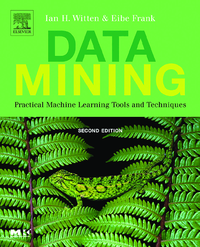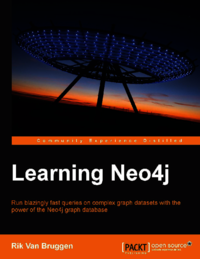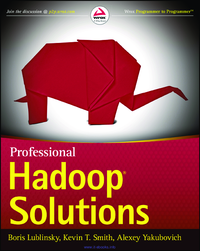Etiqueta "Inteligencia artificial"
Se han encontrado 4 Coincidencias
Modern Applied Statistics with S
83 Visitas | 93 Descargas | 2014-11-28 16:41:29 | orosado
Chapter 1 Introduction Statistics is fundamentally concerned with the understanding of structure in data. One of the effects of the information-technology era has been to make it much easier to collect extensive datasets with minimal human intervention. Fortunately, the same technological advances allow the users of statistics access to much more powerful ‘calculators’ to manipulate and display data. This book is about the modern developments in applied statistics that have been made possible by the widespread availability of workstations with high-resolution graphics and ample computational power. Workstations need software, and the S 1 system developed at Bell Laboratories (Lucent Technologies, formerly AT&T) provides a very flex- ible and powerful environment in which to implement new statistical ideas. Lu- cent’s current implementation of S is exclusively licensed to the Insightful Cor- poration 2 , which distributes an enhanced system called S-PLUS . An Open Source system called R 3 has emerged that provides an independent implementation of the S language. It is similar enough that almost all the exam- ples in this book can be run under R .

Data Mining: Practical Machine Learning Tools and Techniques, Second Edition
mineria de datos e inteligencia artificial
127 Visitas | 201 Descargas | 2015-11-04 19:35:11 | javierd
The convergence of computing and communication has produced a society that feeds on information. Yet most of the information is in its raw form: data. If data is characterized as recorded facts, then information is the set of patterns, or expectations, that underlie the data. There is a huge amount of information locked up in databases—information that is potentially important but has not yet been discovered or articulated. Our mission is to bring it forth. Data mining is the extraction of implicit, previously unknown, and potentially useful information from data. The idea is to build computer programs that sift through databases automatically, seeking regularities or patterns. Strong patterns, if found, will likely generalize to make accurate predictions on future data.Of course, there will be problems. Many patterns will be banal and uninteresting. Others will be spurious, contingent on accidental coincidences in the particular dataset used. In addition real data is imperfect: Some parts will be garbled, and some will be missing. Anything discovered will be inexact: There will be exceptions to every rule and cases not covered by any rule. Algorithms need to be robust enough to cope with imperfect data and to extract regularities that are inexact but useful.

Learning Neo4j
Learning Neo4j. Run blazingly fast queries on complex graph datasets with the power of the Neo4j graph database
94 Visitas | 79 Descargas | 2015-11-05 19:49:40 | pecarrazana
Who this book is for: If you are an IT professional or developer who wants to get started in the field of graph databases, this is the book for you. Anyone with prior experience with SQL in the relational database world will very quickly feel at ease with Neo4j and its Cypher query language and learn a lot from this book.

Professional Hadoop Solutions
Hadoop Solutions
68 Visitas | 66 Descargas | 2015-11-13 20:47:47 | pecarrazana
It’s not that there is a lack of books about Hadoop. Quite a few have been written, and many of them are very good. So, why this one? Well, when the authors started working with Hadoop, we wished there was a book that went beyond APIs and explained how the many parts of the Hadoop ecosystem work together and can be used to build enterprise-grade solutions. We were looking for a book that walks the reader through the data design and how it impacts implementation, as well as explains how MapReduce works, and how to reformulate specific business problems in MapReduce.We were looking for answers to the following questions: ? What are MapReduce’s strengths and weaknesses, and how can you customize it to better suit your needs? ? Why do you need an additional orchestration layer on top of MapReduce, and how does Oozie fit the bill? ? How can you simplify MapReduce development using domain-specific languages (DSLs)? ? What is this real-time Hadoop that everyone is talking about, what can it do, and what canit not do? How does it work?
Contribuir
Usted puede contribuir con Libros UCLV, es importante para nosotros su aporte..
Contribuir